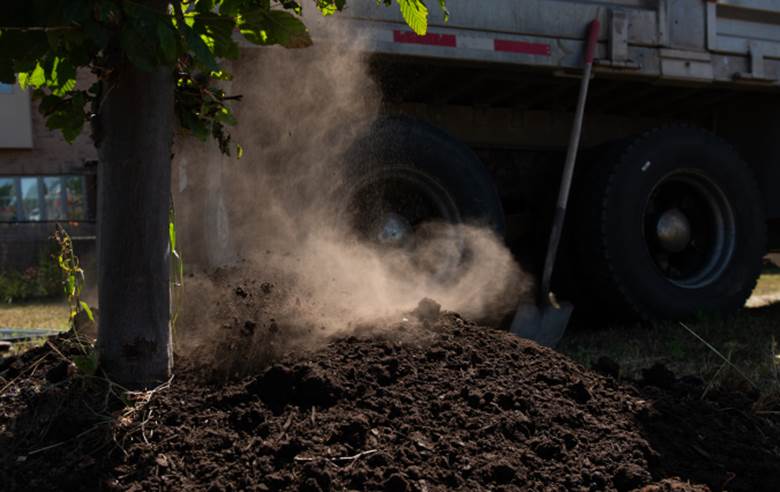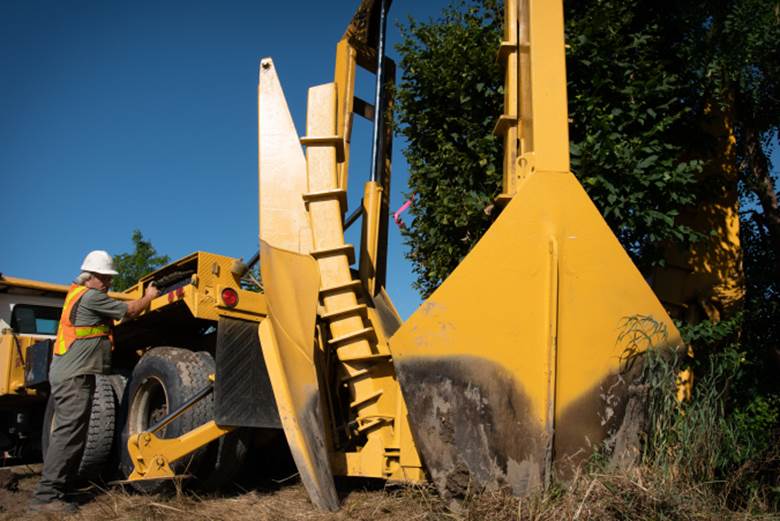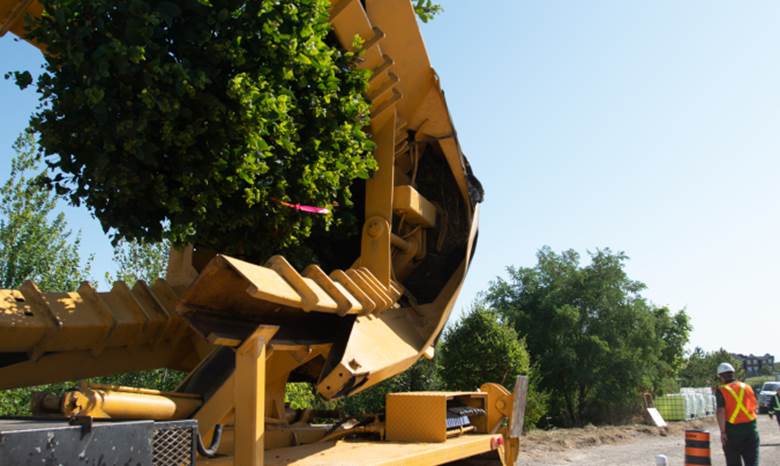
Transit project gives nearby trees a new lease on life
Blog.metrolinx.com
August 14, 2019
Tree cover and transit are some of the most important aspects of any city. They make communities livable and vibrant.But sometimes building transit can get messy, disturbing greenspaces in the construction process. That’s why Metrolinx is working with its contractors and the City of Vaughan to build transit while preserving the nearby flora and fauna.
EllisDon Infrastructure Transit, the contractor building the new and improved Rutherford GO Station, arranged to move 16 trees away from the construction zone and into two parks in the City of Vaughan. The work was performed on August 9, and was a huge success.
The trees had to be moved: they’re perfectly healthy, but they wouldn’t stay that way for much longer.
They were living in what’s going to be a construction zone, on the north side of Rutherford Road just east of the GO rail corridor. EllisDon is preparing to start construction there on a grade separation, lowering Rutherford Road underneath the rail corridor so that cars won’t have to wait at the crossing as trains pass. That construction would have damaged the trees to the point where they’d likely not survive.
“We completely understand that construction, especially on this scale, can have impacts on the community. We want to show the community that we’re good neighbours,” said Zafira Rehmtulla, project coordinator with EllisDon. “We had an arborist go around and determine which trees could be protected and hoarded during construction, and others that had to be removed.”
EllisDon and Metrolinx worked out a deal with the City of Vaughan’s Forestry department where EllisDon hired a specialized contractor to remove the trees with a heavy machine called a tree spade and replant them safely somewhere they can live out the remaining 80 or so years of their lives in peace and leafy tranquility.
“The trees are terrific, they’re perfectly healthy, perfectly saveable, and the [community] impact is huge,” said Peter Harper, forestry coordinator with the City of Vaughan. “It’s remarkable that we have Metrolinx, EllisDon, York Region, and the City of Vaughan all involved in this high-impact job.”
The process of how it’s done is actually pretty cool. It takes careful planning and near flawless execution.

The tree spade comes with 4 blades and uses a hydraulic power system to drive the blades into the ground surrounding the tree.

Water is sprayed on the soil to ease blade penetration and reduce soil disturbance.

The blades encircle the tree root ball in its soil and pull it out of the ground.

Then the spade tilts the tree almost horizontal for overhead clearance,

Transports it to the new location,

And gently places it in a pre-dug hole.

This ain’t your average backyard transplant – this is seriously complicated work.
And it’s not easy – it takes a practiced hand to work the controls in a way that minimizes damage to the tree’s roots. The less damage, the more likely the tree will survive transplanting.
Of the 16 trees moved, nine went to Heritage Park on Valley Vista Drive in Maple, and seven were planted in Tudor Park on Jacob Keffer Parkway in Vaughan.
Harper says he is pleased and grateful at how it all came together. “This job affects the residents of the City of Vaughan. [Heritage Park] had trees removed a while back, so we’re adding and restoring trees there. In Tudor Park, we’re putting in trees in a place that had no trees at all. They’re very likely to survive with the treatment that we’re giving them.”
The work was completed in one (long) day. All trees are present and accounted-for, and everybody’s doing well so far. Extensive and careful watering will allow the roots to set properly and ensure long-term success.
Why bother going through all this trouble? For Rehmtulla, it was a no-brainer.
“As the general contractor, you always want to have the best relationship you can with your stakeholders,” she said. “It was something that was relatively small and inexpensive for us to do, but it has a huge benefit for the community and our stakeholders, so we were glad to do it.”
For Metrolinx, it’s about being a good neighbour. As we build out the GO Expansion program in communities like this one, we want to enable more and better GO rail service for our customers. But we also want to make the livable environment better by preserving the urban canopy for all to enjoy.
